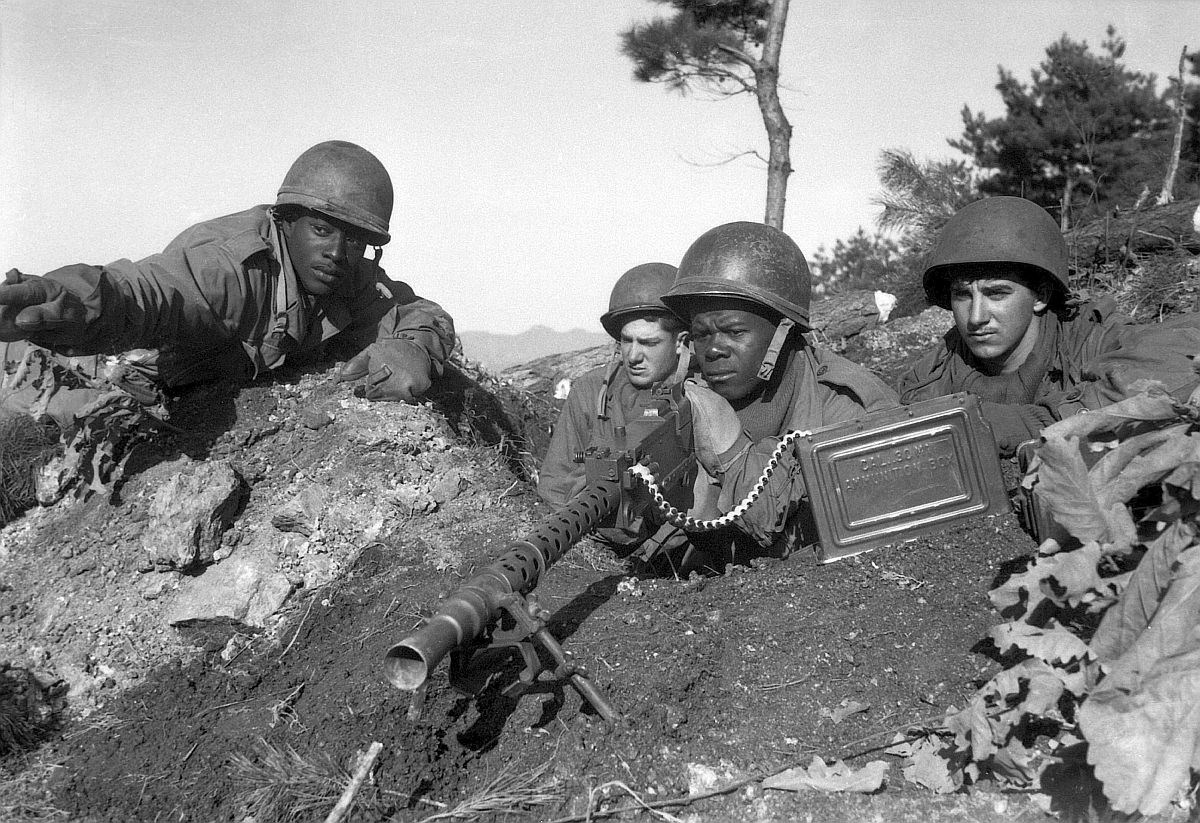Last updated: August 21, 2023
Article
Executive Order 9981, Desegregating the Military

National Archives
Truman’s order received pushback from politicians, generals, and friends, who opposed an integrated military. Truman wrote in response to his detractors, “I am asking for equality of opportunity for all human beings, and as long as I stay here, I am going to continue that fight.”
W. Stuart Symington, the first Secretary of the Air Force, supported President Truman’s initiative, which resulted in the Air Force being the first fully integrated branch of the military. By December 1949, the Air Force reported that the number of integrated units had doubled between June and August 1949. The Air Force’s desegregation measures represented the “swiftest and most amazing upset of racial policy in the history of the U.S. military,” according to Ebony magazine. At many bases in the Jim Crow South, the Air Force ignored local segregation laws, operating integrated housing, schools, stores, and recreation facilities for the airmen and their families.
Secretary of the Navy James V. Forrestal declared “Effective immediately, all restrictions governing the types of assignments for which Negro naval personnel are eligible are hereby lifted. In the utilization of housing, messing and other facilities, no special or unusual provisions will be made for the accommodations of Negroes.”
Despite Forrestal’s perspective, there was a vast difference between Navy policy and practice. Most Blacks in the Navy remained stewards and messmen. In 1949, Wesley A. Brown became the first African American to graduate from the Naval Academy in Annapolis, Maryland. Upon his graduation, he was the first Black officer in the Navy.
The Army was reluctant to enact Executive Order 9981. The segregated Buffalo Soldiers had fought courageously since their establishment in 1866. Nevertheless, Army brass felt that integration of units would lead to a decline in national security. By March of 1950, the U.S. Army agreed to integration across the entire service, but the last segregated army units were not dissolved until 1954. The enlistment quota on African Americans that originally capped Black enlistment at 10 percent was abolished in 1950, when the Army also agreed that all jobs within would be opened based on qualifications and not race. These reforms took place at the onset of the Korean War, a conflict that effectively accelerated integration in the Army. The Twenty-fourth Infantry, the last of the segregated Buffalo Soldiers regiments, was inactivated on October 1, 1951, and its soldiers were reassigned to integrated units.
The United States Marine Corps defended its segregated practices at the time of Truman’s 1948 executive order. During World War II, the Marine Corps had trained Black Marines at Montfort Point, a segregated facility in North Carolina. After the war, demobilization led to a dramatic reduction in the Marine Corps. In 1947, Black Marines were forced to choose retirement or to accept the role of steward. Even though change was slow in the Marine Corps, Black and White recruits began training together in 1949. In 1952, the Marine Corps gradually integrated units to offset losses in the Korean War.
Tags
- charles young buffalo soldiers national monument
- african america history
- african american
- korean war
- veterans
- civil rights
- harry truman
- desegregation of armed forces
- desegregation
- 1940s
- military
- military heritage
- military history
- military personnel
- military timeline
- integration
- buffalo soldiers
- buffalo soldier
- executive order 9981
